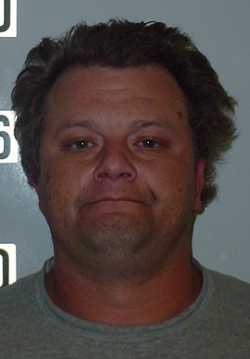LAKE COUNTY, Calif. – Three decades after the AIDS epidemic began, powerful treatments, different perspectives, and a new global awareness and education campaign are being employed to eradicate the disease and its devastating consequences once and for all.
The 23rd annual World AIDS Day, Dec. 1, coincides this year with the launch of a new global campaign theme, “Getting to Zero: Zero new HIV infections. Zero discrimination. Zero AIDS-related deaths.”
In Lake County, the Community Care HIV/AIDS Program – which organizes the annual AIDSWalk – will host the AIDS Celebration of Life Remembrance at 4 p.m. Thursday, Dec. 1, at Clearlake Oaks Community Methodist Church, located on The Plaza.
Part of the World AIDS Day message is that, while treatments are becoming better and leading to longer lives for patients, the need to take precautions to avoid transmission of the disease remains a key component in the effort to end the 30-year-old epidemic.
The Centers for Disease Control reported that there are an estimated 34 million people living with HIV/AIDS worldwide, with two-thirds of those individuals living in developing countries.
The agency said nearly 1.2 million people in the United States are living with HIV infection, with approximately 50,000 Americans becoming infected with HIV each year.
Dr. Karen Mark, acting chief of the California Department of Public Health’s Office of AIDS, said HIV/AIDS remains a serious public health threat in California, with just over 121,000 of the state’s residents living with the diseases.
Public health officials are urging Californians to learn their HIV/AIDS status as a matter of routine health care.
Mark said testing is especially crucial to stopping transmission, as one in five people who have HIV/AIDS don’t know they’re infected.
In advance of World AIDS Day, on Wednesday the California Department of Public Health and the Office of Statewide Health Planning and Development released a new report, “Trends in the Hospitalization of Persons Living with HIV Infection and AIDS in California, 1988 to 2008.”
The report shows that the number of Californians afflicted with the HIV and AIDS has grown. At the same time, however, it showed that acquiring HIV or AIDS is no longer the death sentence it once was.
The California Department of Public Health said there have been more than 152,000 AIDS cases reported in the state since the epidemic began in the 1980s, with more than 85,000 deaths resulting from the disease.
The number of new cases of HIV infection or AIDS reported annually in California increased steeply until 1992; however, when antiretroviral drug therapies were introduced, the numbers of new AIDS cases and deaths sharply declined, state officials reported.
Thanks to advances in antiretroviral “drug cocktails” patients now receive, those suffering from HIV/AIDS are living longer, healthier lives, according to Stephanie Clendenin, acting director of the Office of Statewide Health Planning and Development.
Those advances in medication have contributed to the significant hospital rate reduction, the Wednesday report shows.
Among the new report’s key findings is that the hospitalization rate per thousand persons living with HIV/AIDS peaked at 464 in 1992 before declining sharply following the introduction of the antiretroviral drugs, dropping to 221 by 2000 and 129 by 2008.
During the epidemic’s early years, approximately half of all hospitalizations involved opportunistic infection, but that number had dropped to about 20 percent by 2008.
In addition, by 2008, more than half of the hospitalizations for individuals living with HIV infection were for treatment of non-HIV or AIDS conditions.
Clendenin said another key finding is that the percentage of those who died during hospitalization also dropped, from 13 percent to 5 percent during the study years.
In reviewing hospitalization rates, Clendenin said rates have been consistently highest for blacks, with whites in second place until 1996, when Hispanics then moved into second place.
State public health officials acknowledged the challenges in tackling and eliminating health disparities associated with ethnic communities, which California Department of Public Health Director Dr. Ron Chapman said have become more apparent in recent years.
“I think we still have a long way to go in that work of eliminating health disparities,” Chapman said Wednesday.
Mark said Hispanics are more commonly dual diagnosed with HIV/AIDS, which is a result of late testing.
“That’s a missed opportunity” in terms of getting people into care, Mark said.
Late testing for Hispanics is believed to arise from a number of factors, from lesser health literacy, language issues and also the stigma that is still attached to the disease, Mark said.
As a result of better treatments, Clendenin said HIV/AIDS patients are living to an age where physicians are observing them developing age-related diseases just like the general population.
State statistics show that men account for the most cases, with total HIV/AIDS cases in men totaling nearly 183,000, compared to just over 20,000 for women.
Whites still account for the most HIV/AIDS cases, at 106,643, followed by Hispanics, 52,525, and blacks, 36,627, according to state reports.
Lake County sees new cases due to moving population
Lake County Public Health Officer Dr. Karen Tait agrees with state public health officials that the need for vigilance continues.
“It is good news that people who receive care for HIV infection can now live much longer and healthier lives,” she said. “At the same time, we cannot forget that HIV infection is a serious illness whose treatment does have side-effects, and that prevention of infection is a top priority.”
Tait said Lake County sees very few newly diagnosed HIV infections, generally zero to one annually.
According to the semiannual report of HIV/AIDS cases by county produced by the California Department of Public Health’s Office of AIDS, from April 2006 – when HIV reporting began – through this past June 30, Lake County had 19 total HIV cases, with one death, for a 5 percent death rate, just above the statewide average of 4 percent.
The report also showed that Lake County had 158 reported AIDS cases from March 1983 through June 30, of which 91 of the individuals were now deceased, for a 58 percent death rate. The statewide death rate averages 57 percent.
Tait said Lake County sees the same risk factor profiles that show up in the state statistics, with gay and bisexual men being the largest exposure category. State statistics show heterosexual contacts account for more reported cases of HIV and AIDS than intravenous drug users.
Perinatal exposure, which Tait said is virtually preventable through proper medical care, is a very small exposure group.
Tait said Lake County has seen an influx of patients living with HIV/AIDS, who she said are moving to the county because of economic factors, as well as clinic closures in neighboring counties – mainly in Sonoma, ranked no. 17 statewide for the cumulative number of HIV cases and No. 13 for the number of AIDS cases, according to recent state figures.
“People are coming here for treatment,” said Tait, pointing out that clinics such as the Lakeside Health Center in Lakeport, run by Mendocino Community Health Clinic, offer outpatient clinic resources for treatment of patient with HIV/AIDS.
Lake County News was unable to reach the clinic’s administration for comment on Wednesday.
Comparatively, Lake County has the 41th highest HIV cumulative caseload and the 40th highest AIDS caseload, based on the state’s semiannual report on cumulative HIV/AIDS cases by county.
“Our numbers remain really quite small,” Tait said.
Chapman told Lake County News on Wednesday that community health centers – such as Lakeside Health Center – play an absolutely critical role in caring for those who have HIV/AIDS.
Even with health care funding cuts, Chapman noted, “I have to say that with health care reform coming in 2014, I’m actually very optimistic about the role of community health centers.”
He said federal health care reform is providing more money for such clinics, which already are starting to see more funding for new centers and strengthening the infrastructures of existing clinics.
Tait said she wants to emphasize prevention messages as the best way to prevent HIV infection. Prevention also is the best way to tackle diseases such as Hepatitis C, commonly transmitted through intravenous drug use, and gonorrhea and other sexually transmitted infection that are acquired through unprotected sexual contact, Tait added.
The county has ongoing problems with gonorrhea and chlamydia infections, which indicates to Tait that the prevention message hasn’t reached all the people that it should.
While there is great emphasis placed on HIV prevention, Tait said Lake County does not receive funding for that activity.
“In the past we were able to provide screening tests for HIV, but that funding dried up, so now we refer people wanting to be screened to be tested through health providers using usual clinical laboratories, like any other medical test,” she said. “This is not necessarily a bad thing, but it may pose a barrier to testing for some high risk populations that aren't inclined to go to a medical clinic.”
E-mail Elizabeth Larson at This email address is being protected from spambots. You need JavaScript enabled to view it. . Follow Lake County News on Twitter at http://twitter.com/LakeCoNews, on Tumblr at www.lakeconews.tumblr.com, on Facebook at www.facebook.com/pages/Lake-County-News/143156775604?ref=mf and on YouTube at www.youtube.com/user/LakeCoNews .
1988-2008 AIDS and HIV Hospitalization Trends Report











